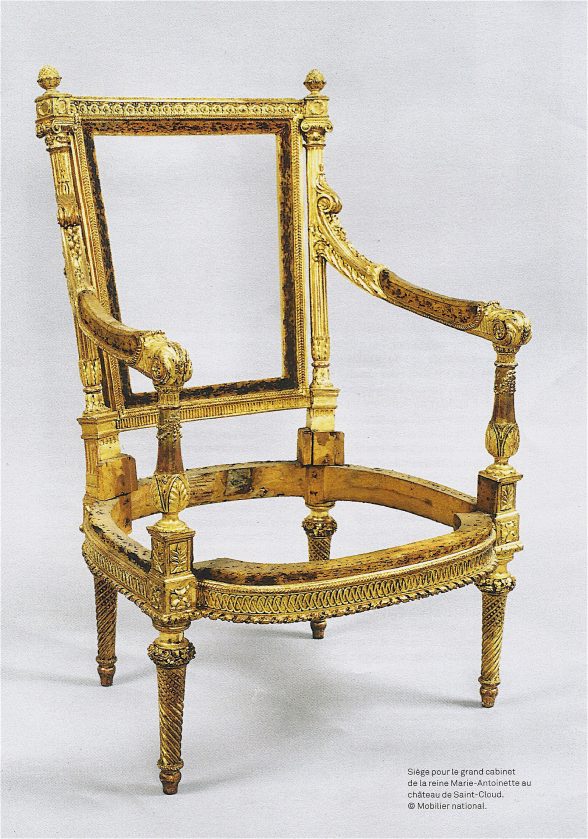
About 10 years ago I traveled south to Weil am Rhein, a sleepy village in Germany across from Basel, Switzerland. The purpose–a walk through Vitra’s Chair Museum on assignment for a glossy arts magazine. Vitra, a company which reproduces classic modern and contemporary chairs, has both the rights to Charles and Ray Eames’ designs and one of the most extensive collections of chairs on the planet. I loved those early designs, their construction, and how they paralleled the history of art and culture in wood, plastic, and fabric. So, it was with a continued interest in the chair and everything it stands for that I went to see Sièges en Société at La Galeries des Gobelins, here in Paris.
The cushioned heights of fashion
Sièges en Société brings together more than 300 chairs and furnishings from 300 years of French high society, at one of the least celebrated Parisian museums. The Manufacture des Gobelins, known for its centuries-old tapestries produced for French Royals since Louis XIV, is one of France’s most esteemed repositories of both furniture and intricate woven textiles. It was chartered by Henri IV in 1602 to produce Flemish tapestries, renting space from the Gobelins, a family of textile dyers.
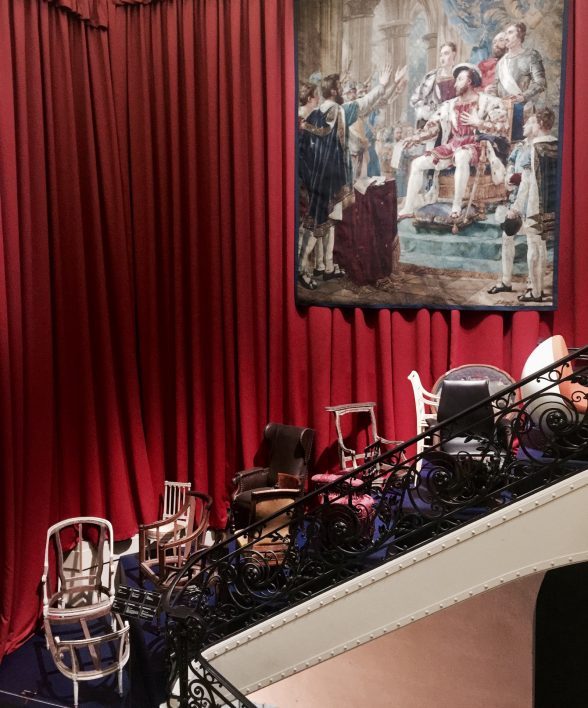
The Gobelins atelier (factory) is an historical landmark in many ways, having supplied luxury items that helped define culture in Europe, and was at its height the most sophisticated tapestry laboratory anywhere. The campus of nearly a half-dozen buildings in the 13th arrondissement is also the home for the Mobilier National (the official French cultural agency and archive of the nation’s decorative furniture arts), which organized this exhibition pulling the chairs, sofas, beds, and chimney screens from their extensive collection.
Curated by famed interior designer Jacques Garcia, the exhibition does a good job of offering an honest look at wood shaped and molded by hand and early machines (lathes, saws, mallets), and turned into the luscious props of the richest people living in the the last three centuries.
Skeletons of past elegance
Like kids posing for class photos, many of these chairs in the entry gallery are shown bare and pocked with the marks of craftsmen, and freckled with tack holes and homes for all sorts of insects. Usually we gawk at museum objects that are polished, sleek, and punctuated with color or material, but rarely do we see how these objects are put together. Nails, joints, carvings, scrapes and even dried glues are all concealed beneath a thin layer of dust. Shorn of their silk and embroidered coverings, the first chairs we see are the simple carved and aged frames from both known and anonymous craftsman. But their skeletal beings echo tales from the rich and famous from centuries past.
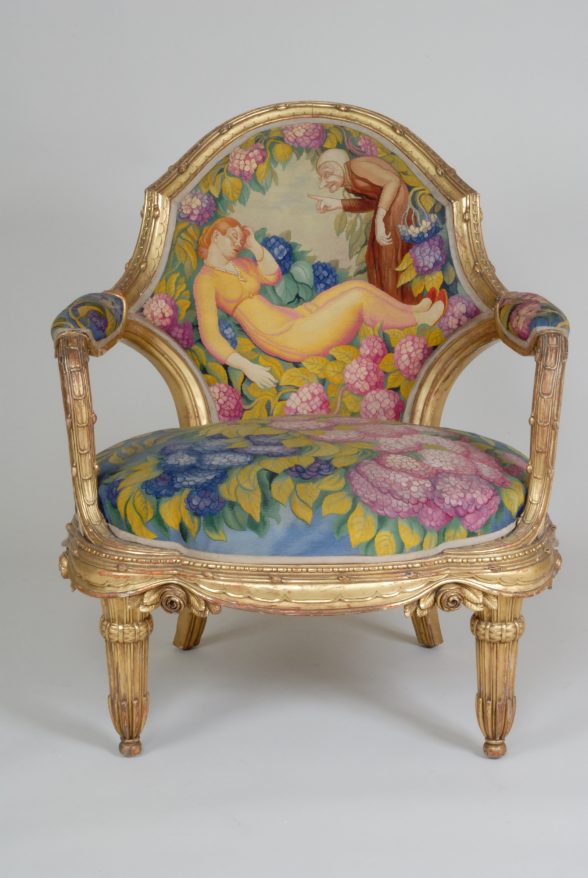
One of the more magical pieces in this exhibition is a hand-carved armchair in gold leaf featuring a tapestry from Beauvais–an atelier second only to the Gobelins in importance. Beauvais’s tapestries and textiles were destined for private clients not royals; there is clearly more freedom in range of subject matter and designs as its audience was varied and eclectic in its taste. The “Sleeping Beauty” chair, from 1913/1926, was carved by Paul Follot and “illustrated” by furniture painter Jean Veber (1864-1928) who riffed on the fairy tale “La Belle au Bois-dormant.” If you look closely, you can detect hints of art nouveau and make links to storytelling American regionalist painters like Thomas Hart Benton, Grant Wood, and others. You can see in this piece how the design arts had changed at the onset of the 20th century to reflect contemporary interest in non-religious, more literary and accessible content.
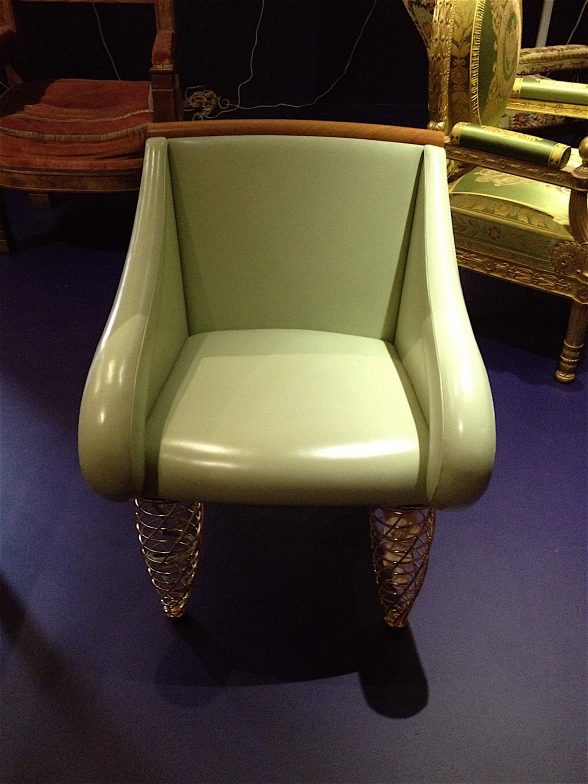
How to show off while sitting down
A contemporary armchair is also on display here. One of a series of four, this sleek chair was designed in 1991 by Sylvain Dubuisson for Jack Lang’s office. Lang, Minister of Culture, was celebrated for his embrace of the newest, so this piece riffing off the Jetsons with its metal hoop legs and green almond leather covering points towards a future of cool.

More typical of the kinds of “royal” objects would be the lone “twin” (two were made, only one is on view) created by the furniture designer Ballangé after drawings by Percier and Fontaine for the King of Rome–Napoleon II–and delivered in 1814. Clearly, this chair speaks about power and glory and wealth, but there’s a terseness to it as well that is signifies rigidity–this chair is not for socializing and schmoozing. No wonder the second chair was borrowed from the Mobilier National by the Sultan of Morocco in 1915, and today serves as one of the thrones of the King of Morocco.
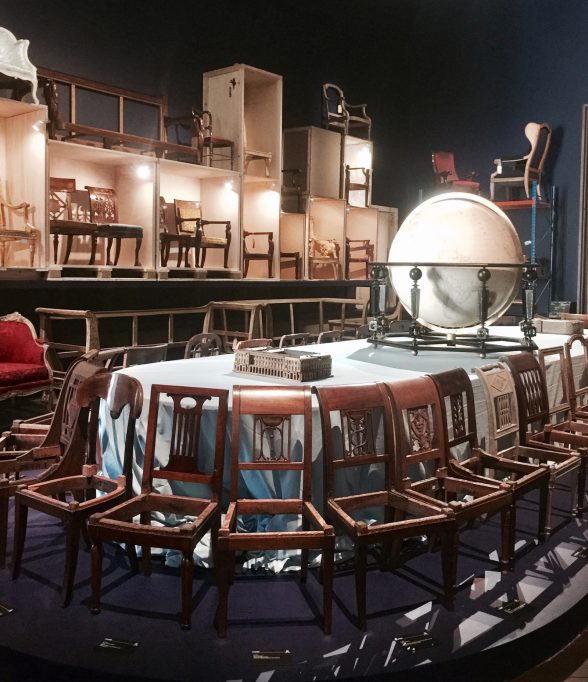
The exhibition continues on to include more modern chairs, a selection of divans and a room lined with fanciful chimney screens–all self-standing pieces with woven tapestries. Some are narrative, others laden with flowery designs and fairy tale moments. Without television and smart phones, one assumes the wealthy roamed around their apartments moving from one sumptuous chair to another, staring into the woven, illustrated screens.
No place to sit at the chair party
On the way up to the second floor a few handfuls of modern and contemporary chairs have been scattered on the staircase and sequestered behind a red rope, almost as if featured in a VIP rummage sale. This apparently is the mise en scène by designer Jacques Garcia. It’s unfortunate to my mind because it suddenly takes away the interest in the objects and relegates them to the theater of clean up at a bar mitzvah–plus it’s hard to see these pieces in the mélée.
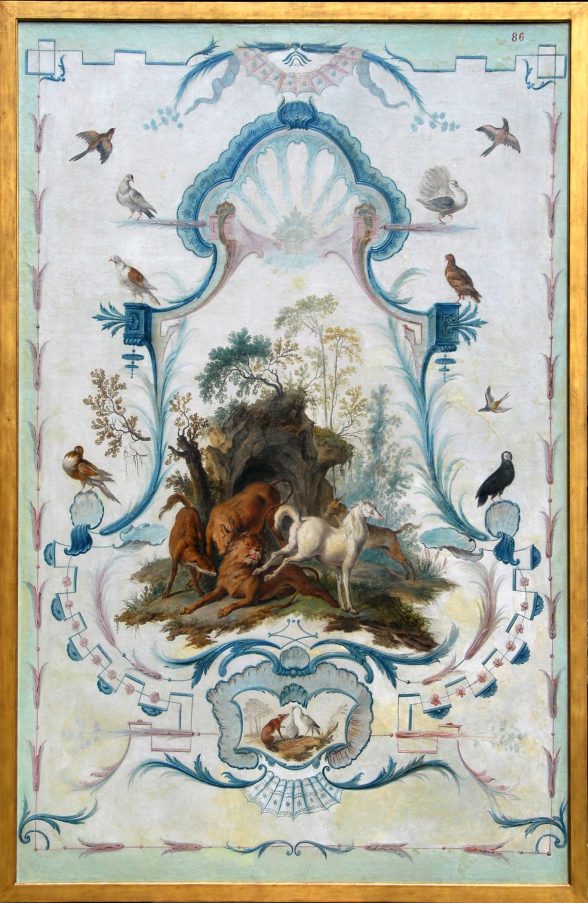
In the large salon on the second floor, however, several gorgeous tapestries from the collection are on view and I got a better understanding of the workmanship that went into weaving them. The detail rivals paintings of the 17th and 18th centuries, and their colors, for the most part, vibrate through the fabric. Several dozen “carton de tapisseries,” or design maquettes, are also on display. The detail of these little paintings is terribly precise, particularly when translating literature like those from the Fables of La Fontaine. It’s astonishing and a good reason to visit Les Gobelins for the full atelier/factory tour.
Finally there is a small mirrored salon where Jean-Jacques Garcia created a kind of techno party for divorced loner pieces of furniture from the collection. It’s the oddest part to the show, featuring the most contemporary piece in the exhibition–a ribbon of wood formed into a rocking chair, based on a project by designer Richard Peduzzi.
While I was happy to see other aspects of the collection, I had the feeling that Mr. Garcia, in digging through the museum’s archives, couldn’t quite locate the sound system and mirrored disco ball for the techno soirée.
What I really wanted though, was to see more chairs–300 is just not enough–and to know a bit more about who sat where and when. I would have liked, too, a place to sit down to contemplate them all!
Sièges en Société du Roi-Soleil à Marianne,April 25 – September 24 2017.Galerie des Gobelins 42, avenue des Gobelins 75013 Paris.









